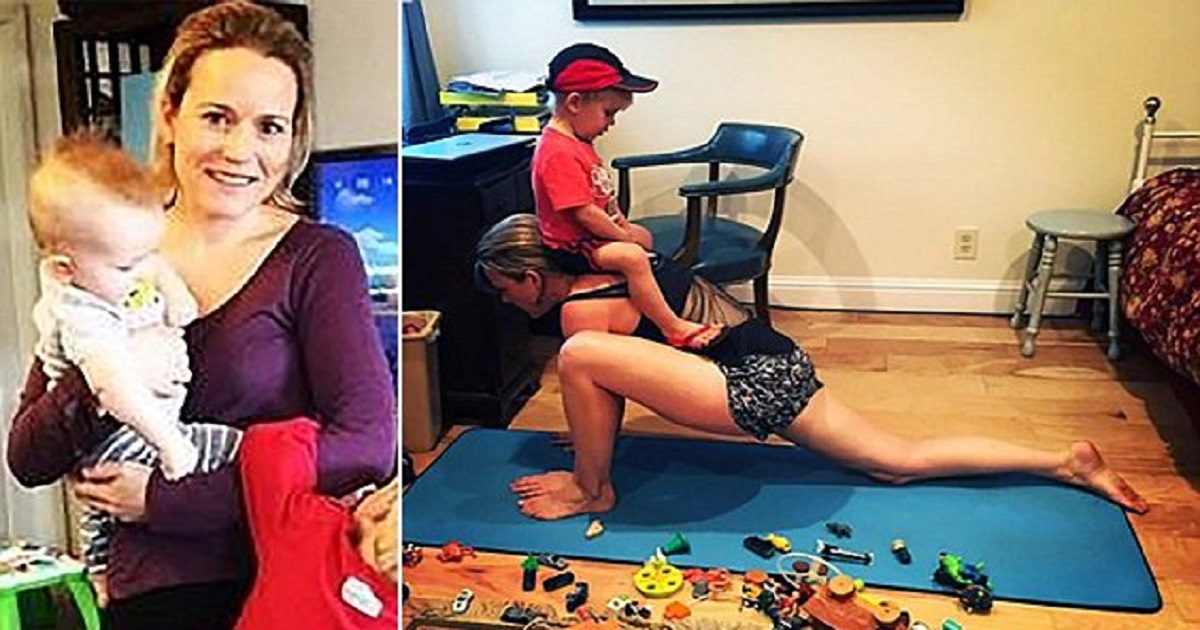A striking set of twins born with different skin colors – one black and one white- are speaking out on their unique ‘one-in-a-million’ story.
The girls Marcia and Millie Biggs reveal that at just age 11 they are already aware of racism and are daily peppered with the question ‘Are you two really twins?’
Marcia who has fair skin, blue eyes, and blonde hair takes after her Caucasian mother while Millie who has dark skin, brown eyes, and black hair takes after her Jamaican-descent father.
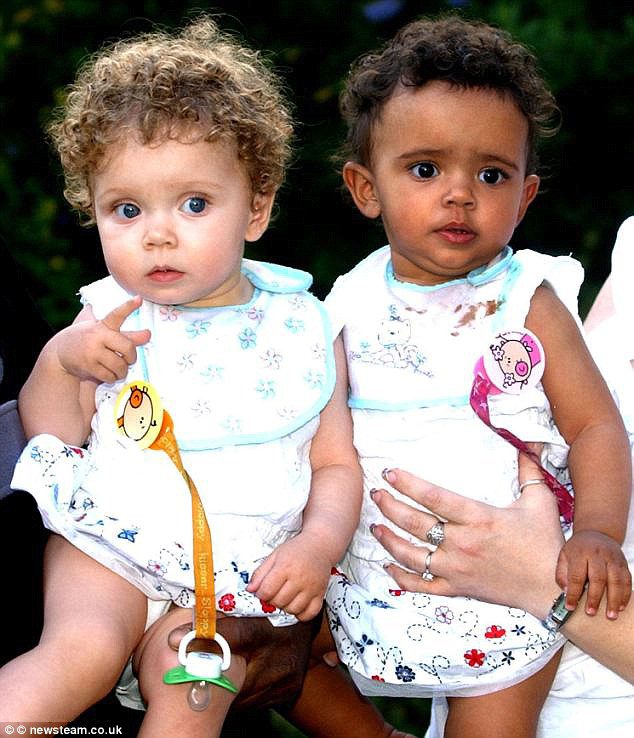
The twins, of Birmingham, England, were born on July 3, 2008 to a white mother and black father
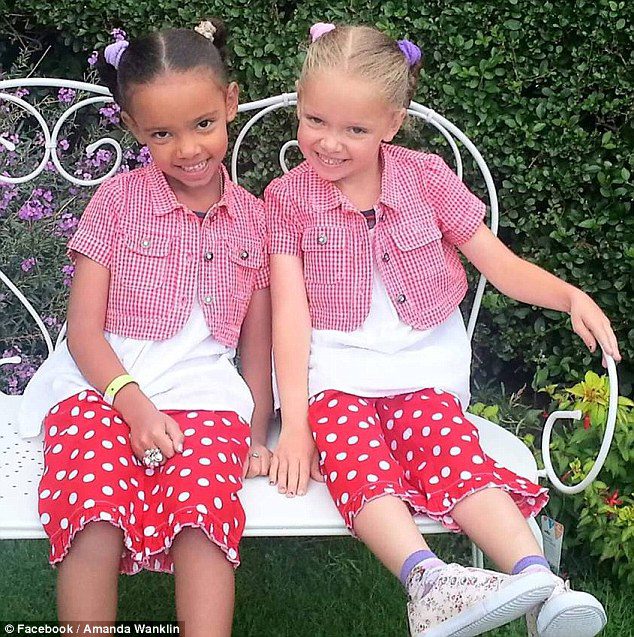
Millie, left, has dark skin, brown eyes, and black hair takes after her Jamaican-descent father while Marcia, right, has fair skin, blue eyes, and blonde hair takes after her Caucasian mother
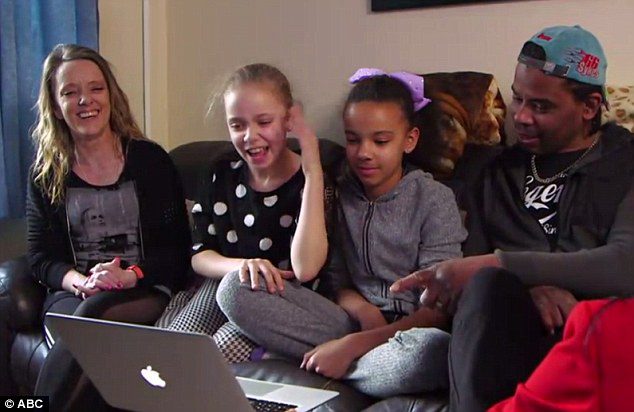
The girls wedged in between their parents Amanda Wanklin, left, and Michael Biggs, right on Good Morning America reacting to their National Geographic cover displayed on the laptop
Experts say that the phenomena, although unique, occur in one in 100 fraternal births.
Their mother calls the girls a ‘one-in-a-million’ miracle.
The girls shared the story of their race-defying appearances in the April issue of National Geographic.
The twins, of Birmingham, England, were born on July 3, 2008.
Their parents, a biracial couple, said they ‘didn’t give a toss’ of what people might think of their interracial relationship and brought the same approach towards their mixed-race children.
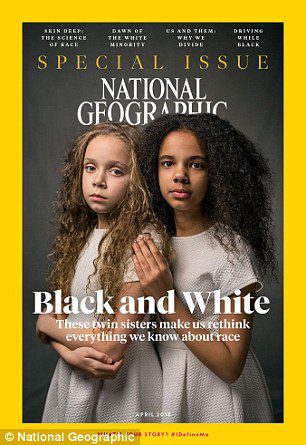
Young stars: Fraternal twins Marcia and Millie Biggs, 11, grace the cover of April’s National Geographic sharing their life growing up as two different skin colors
At first, the parents thought their daughters – who they gave the mixed names of Millie Marcia Madge Biggs, the other Marcia Millie Madge Biggs – were identical as they shared similar skin tones.
At about 10-months their skin began to change into more distinct colors.
‘The change happened with Millie first. She went darker and darker,’ father Michael Biggs said to Good Morning America.
‘We never worried about it; we just accepted it,’ Michael said to National Geographic.
From their infancy, the girls were scrutinized for their different appearances.
‘When they were first born I would be pushing them in the pram, and people would look at me and then look at my one daughter and then look at my other daughter. And then I’d get asked the question: “Are they twins?”‘ mother Amanda said.
She’d respond ‘Yes’ to which the reply would always be ‘But one’s white and one’s black’.
‘Yes. It’s genes,’ she said.
She clarified that passersby were never hostile to the girls if anything they were curious about the contrasting appearances that made them pass off as friends rather than sisters.
‘As time went on, people just saw the beauty in them,’ Amanda said.
‘Sometimes people don’t believe us when we say we are twins. They think we’re just telling a lie,’ Marcia said to Good Morning America.
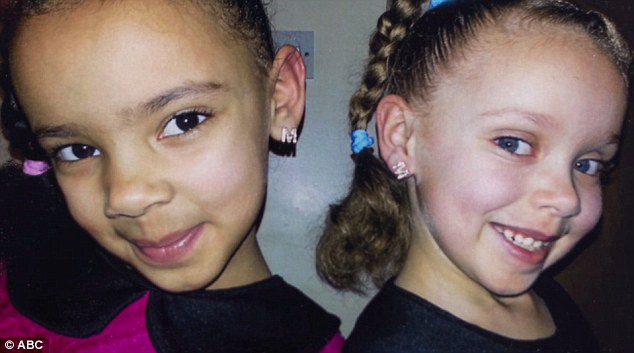
The girls share similarities in facial features but vastly differ in eye, skin, and hair color
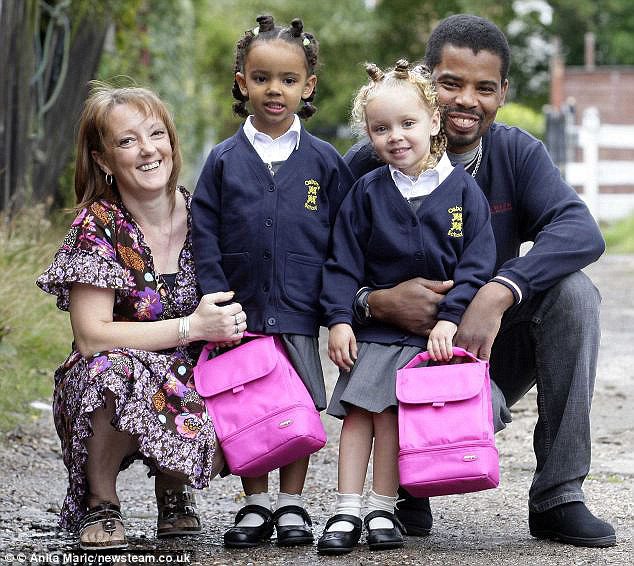
The girls, posing above with parents in matching hair and outfits heading off to school, are often mistaken for best friends rather than twins
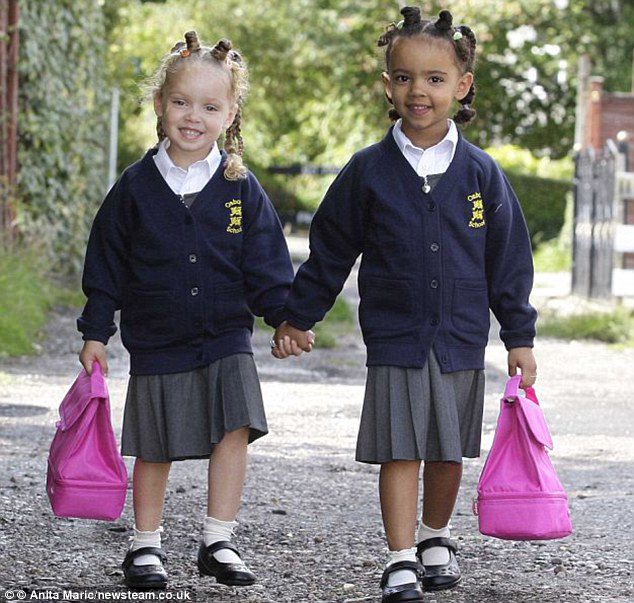
The girls reveal they are often peppered with curious questions asking if they are really twins despite one being white and the other black, but they say they never experienced racism
When speaking of racism the girls reveal they understand the concept quite well.
‘Racism is where somebody judges you by your color and not by your actual self,’ Millie said.
Marcia said racism is ‘a negative thing because it can hurt people’s feelings.’
Although father Michael admitted he’s faced racism in life he said ‘it’s a different time now’.
He and wife Amanda say they’ve never seen racist behavior towards the girls. And the girls too say they never felt it either, even when people pick apart their looks.
‘When people see us, they think that we’re just best friends. When they learn that we’re twins, they’re kind of shocked because one’s black and one’s white,’ Marcia said.
Although their radical differences may seem to be the most prominent thing about them, the race is actually the farthest concern from the girls’ minds.
When asked about what made the two different, the girls began to talk about their different styles and favorite colors rather than fixating on the skin and eye colors.
‘Millie likes things that are girlie. She likes pink and all of that. I don’t like the color pink; I’m a tomboy. People are made how they are,’ Marcia said.
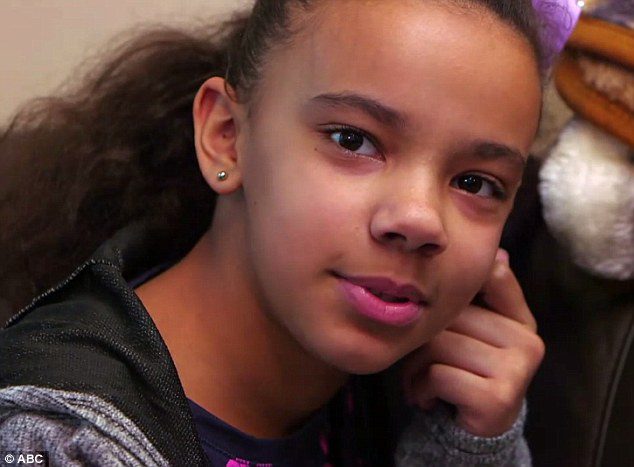
Millie spoke on Good Morning America, above, saying that ‘it’s nice because people can’t tell that you’re one, they can’t tell you that you’re white and they can’t tell you that you’re black because you’re not, you’re like kind of both’
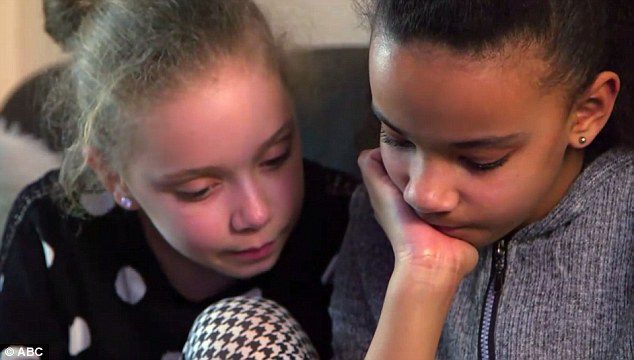
The girls, pictured above on Good morning America in March say they are very close
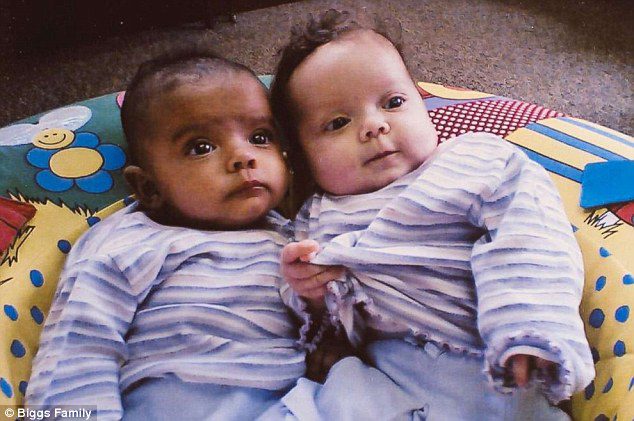
Their parents revealed that at first the babies seemed identical, but around 10 months their skin colors began to vary and Millie became darker
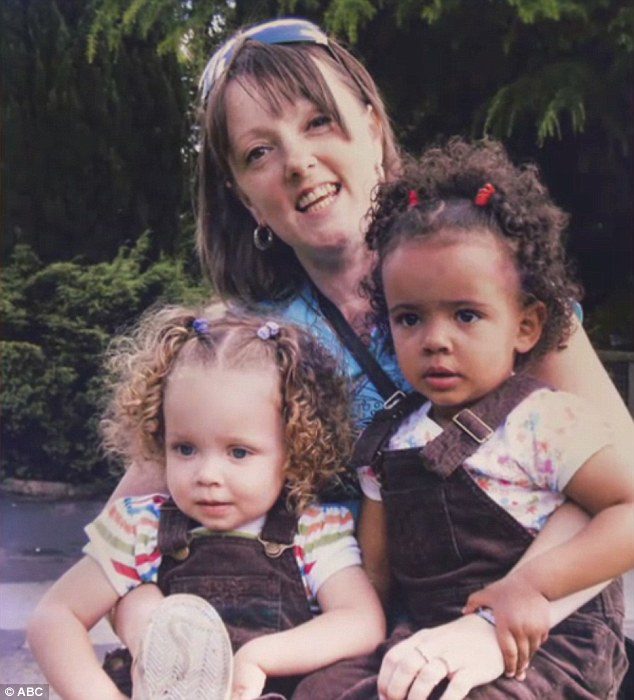
The twins, pictured with mom when they were younger, say they differ not in skin color but in that Millie, right, is girlie, and Marcia, left, is a tomboy
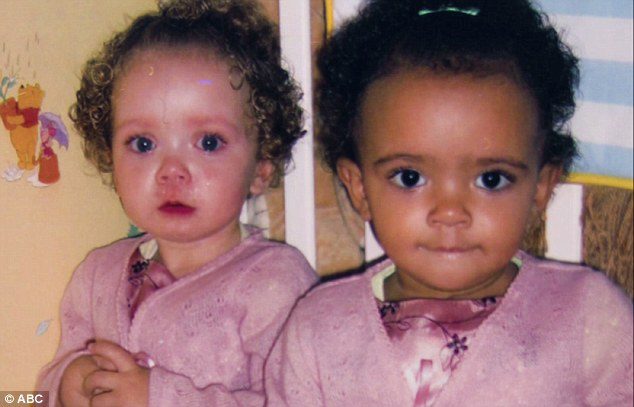
Marcia left, said: ‘I think it’s better to be different from other people because you can just be yourself’
But the girls say they don’t feel racism against them as they fit in between constructs, with parents of two different backgrounds.
‘I think its nice because people can’t tell you that you’re one, they can’t tell you that you’re white and they cant tell you that you’re black because you’re not, you’re like kind of both,’ Millie said on GMA.
‘I think it’s better to be different from other people because you can just be yourself,’ Marcia added.
The reason for their starkly different appearance is that the girls are fraternal twins, not identical, meaning that the mother’s two eggs were fertilized by two different sperm.
Therefore the girls are no more alike than any other sibling as the eggs share just 50 percent of the same DNA.
For biracial couples, fraternal twins’ traits depend on numerous variables such as the ‘where the parents’ ancestors are from and complex pigment genetics’, according to statistical geneticist Alicia Martin as told to National Geographic.
She adds that it’s not rare at all that biracial couples see their fraternal twins look more like one parent than the other.
If you know someone who might like this, please click “Share!”
